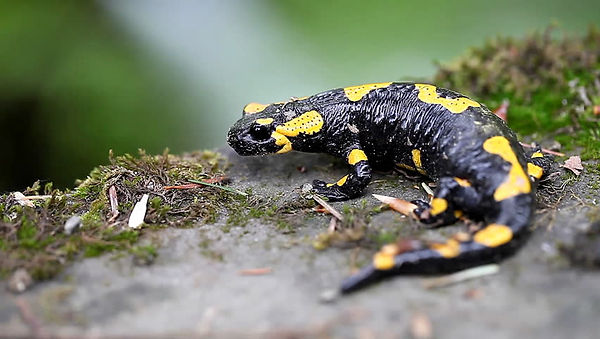top of page

Class Amphibia
Main characteristics:
The world amphibia literally translates to "two lives" - the organisms' life on land, and the other in water. For this reason, all amphibians begin their life in water with gills and tails and, over time, develop lungs and legs for their life on land. [4]
These are cold-blooded (not mammals), so therefore possess the same temperature as the air or water around them; they are not capable of heating of cooling their body temperature on their own, so they must balance between shade and sunlight to obtain the ideal temperature over the day. [4]
Characteristics of amphibians include:
Having moist skin, lack of scales and claws.
Laying eggs without shells frogs, toads, salamanders 2,000 species.
Newts are salamanders, however, salamanders are not always newts. This is because the word "salamander" is the generic name for the scientific order of amphibians that have tails as adults - caudates. [31]
Both salamanders and newts are amphibians, and have from eggs that are laid near or in water. Most of them have gills when born, but these eventually develop into lungs - however, some have both gills and lungs forever. On the flip side, some salamanders have neither lungs nor gills - these breathe through the skin in their mouths. [32]
Did you know…?
Some salamanders are amphibious, others terrestrial, others entirely aquatic. Salamanders can lay up to 450 eggs at once. [32]
Salamanders and newts are carnivores. They move slowly so they have to catch slow-moving prey like worms or snails. [32]
Usually, salamanders grow to be between 2 and 6 inches long. However, giant salamanders can grow 6 feet long - this is taller than you! [32]

bottom of page